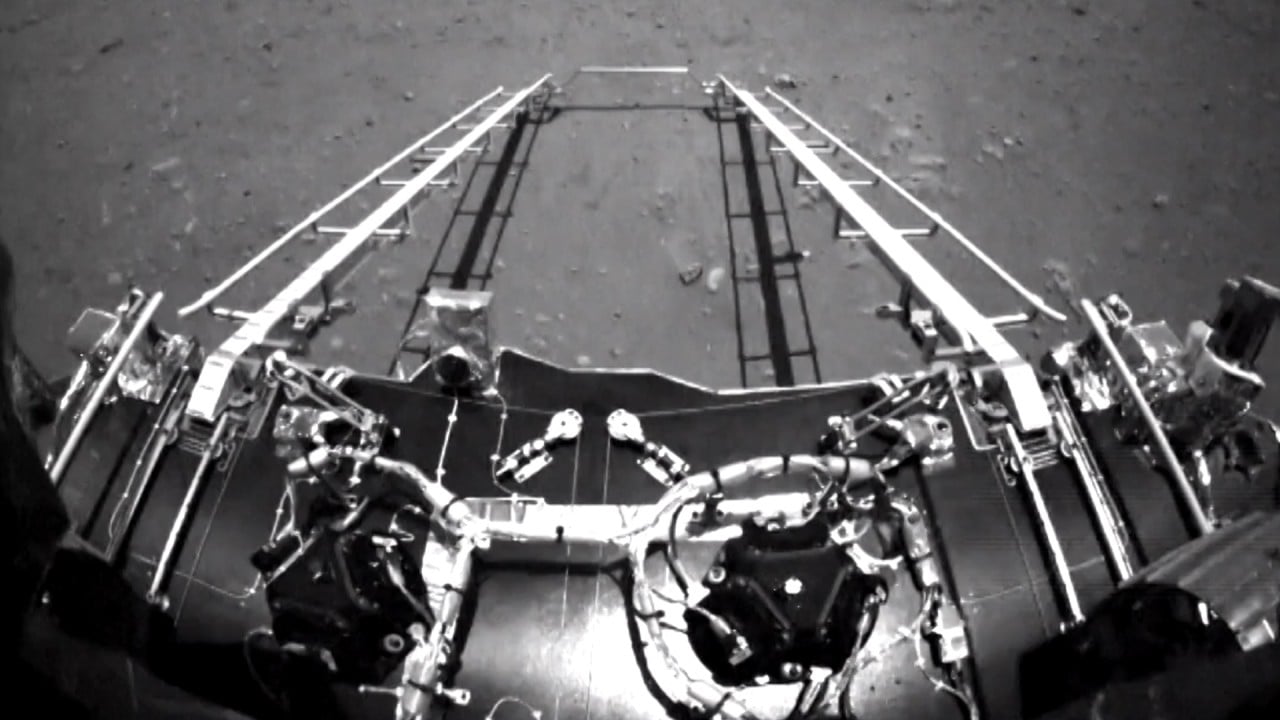
China picks veteran to lead first space station crew, as lift-off preparations begin
- Shenzhou-12 is China’s first crewed space flight in nearly five years and will be led by Nie Haisheng on his third mission
- The astronauts will spend three months on board the Tianhe, core module for the Tiangong space station
The Long March 2F rocket carrying them to the Tianhe module – the first part of the Tiangong space station – is expected to lift off at around 9.22am from the Jiuquan satellite launch centre in the Gobi Desert. Propellant refuelling for the rocket was under way on Wednesday morning, according to the China Manned Space Engineering Office.
Lift-off for China’s Tiangong Space Station ambitions
Ji Qiming, assistant director, told a morning press conference that the mission would be led by Commander Nie Haisheng, who at 56 will set a record as China’s oldest astronaut in space. It will be his third space mission. The record for the oldest person in space is held by American John Glenn – best known for orbiting the Earth in 1962 – who was 77 when he flew in the space shuttle in 1998.
Nie, who captains the Astronaut Brigade of the People’s Liberation Army, was selected as one of China’s first 14 astronauts in 1997 and was part of the Shenzhou-6 and 10 missions in 2005 and 2013, respectively. He will be joined by Liu Boming, 54, another member of the 1997 cohort, who took part in the Shenzhou-7 mission of 2008.
The third member of the crew is 45-year-old Tang Hongbo, who will be on his maiden space flight.
They will be the first Chinese astronauts to set foot in a space station since 2011. A US law banning Nasa from space cooperation with China has effectively excluded access to the International Space Station which has hosted more than 240 men and women of various nationalities in the past two decades.
The Shenzhou-12 – which means “divine vessel” in Chinese – is China’s first manned space flight in nearly five years and is scheduled for less than two weeks before the Communist Party’s centenary celebrations on July 1. It is the third of 11 planned construction missions for the space station, which is expected to be completed by 2022. Four of the missions will be crewed, with plans to send up to 12 astronauts.
The crew will spend three months on Tianhe – “harmony of the heavens” – breaking China’s previous record of 30 days in space, set by astronauts Chen Dong and Jing Haipeng in 2016. The world record for the longest time spent continuously in space by an individual is held by Russian cosmonaut Valeri Polyakov, who spent more than 14 months – 437 days and 18 hours – aboard the Mir space station in 1994-95.
Ji, from the China Manned Space Engineering Office, said the trio would perform two space walks during their stay in orbit to assemble and test their suits and tools, install panoramic cameras and extended pump sets.
While monitoring their own health and making sure they stay healthy and fit, they are expected to carry out testing and operating of the core cabin, life support system, robotic arm and waste management system. The crew will also conduct a series of space science experiments in the orbiting lab.
Ji said the propulsion and orbital module of the Shenzhou manned spacecraft would burn up when it re-entered Earth’s atmosphere, and “will not cause harm to the ground”.
China’s space race gathers pace: next stop, Jupiter?
Nine projects from 17 countries have been selected for experiments during the mission. Ji said the space station would be “a space laboratory that benefits all mankind” and that China would work with the United Nations Office for Outer Space Affairs (UNOOSA) to announce a second round of cooperative opportunities.
Ji said China had also received requests for joint flights with Chinese and foreign astronauts from “many countries and regions” and “we generally welcome this”.
“We believe that after the completion of the Chinese space station in the near future, we will see Chinese and foreign astronauts jointly participating in flights.”
But he did not mention the United States when he listed the group of countries and international bodies that have collaborated with China’s manned space programme. They include Russia, Germany, France, Belgium, Italy and the European Space Agency (ESA), in addition to UNOOSA.
The Tianzhou-3 cargo spacecraft and Shenzhou-13 crewed mission are expected to launch in September and October, respectively. The modules Wentian and Mengtian are set to follow next year to host experiments in astronomy, space medicine, space life science, biotechnology, microgravity fluid physics, microgravity combustion and space technologies.
The Chinese space station is expected to operate for at least 10 years. China in May became the second country to put a functional rover on Mars, two years after landing its first spacecraft on the far side of the moon.



